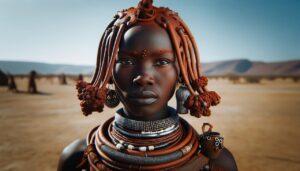Unveiling the Enigmatic Maldivian Tribes: A Journey into the Cultural Tapestry of Paradise
Introduction:
The Maldives, an archipelago of pristine coral islands nestled in the heart of the Indian Ocean, has long been celebrated for its turquoise waters, vibrant coral reefs, and luxurious overwater bungalows. Yet, beyond the postcard-perfect scenery lies a rich tapestry of cultural diversity, with the Maldivian tribes adding an intriguing layer to the nation’s identity. In this exploration, we embark on a journey to unravel the unique and often overlooked aspects of Maldives’ tribal communities.
Historical Background:
The history of the Maldives is a fascinating mosaic of influences from India, Sri Lanka, Arabia, and even Africa. The islands have been inhabited for over 2,000 years, with early settlers likely arriving from the Indian subcontinent. As trade routes flourished, the Maldives became a melting pot of cultures, giving rise to distinct tribal communities.
The Three Major Tribes:
Dhivehin:
The Dhivehin, or Maldivians, form the majority of the population and are considered the main tribe of the Maldives. Dhivehin culture is deeply rooted in the traditions of the islands, with influences from South Asia, particularly India. The Dhivehin language, Dhivehi, belongs to the Indo-Aryan group and is the official language of the Maldives. The traditional music, dance, and art of the Dhivehin people reflect the nation’s historical ties to both South Asia and the Arab world.
Haa Alif Atoll Tribes:
The northernmost atoll of Haa Alif is home to several tribes that have distinct cultural practices and traditions. These tribes have preserved their unique way of life for generations, adapting to the challenges presented by the island environment. Fishing, boat building, and coir rope making are integral to their livelihoods. The people of Haa Alif have maintained a strong connection to the sea, with fishing playing a crucial role in their daily lives.
Gnaviyani Atoll Tribes:
In the southernmost Gnaviyani Atoll, a cluster of tribes has developed distinct customs and practices that set them apart from other Maldivian communities. The Gnaviyani Atoll tribes have a rich oral tradition, with storytelling and poetry serving as a means of passing down their history and values. The atoll’s unique cultural heritage is also expressed through traditional dances and music that celebrate the islands’ natural beauty and the resilience of its people.
Traditional Practices and Customs:
a. Bodu Beru Music and Dance:
Bodu Beru, a traditional Maldivian drum dance, is an integral part of the cultural fabric. The rhythmic beats of the drums, combined with energetic dancing, create a captivating performance that reflects the vivacity of Maldivian life. The dance is often accompanied by traditional songs that tell stories of love, adventure, and the challenges faced by the island communities.
b. Dhoni Building and Navigation:
The construction of dhonis, traditional Maldivian boats, is a skill passed down through generations. The intricate craftsmanship involved in building these wooden vessels is a testament to the islanders’ deep connection with the sea. Dhonis are not only essential for fishing but also play a crucial role in transportation between islands.
c. Cultural Festivals:
Maldivians celebrate various festivals that highlight their cultural diversity. Eid al-Fitr and Eid al-Adha, rooted in Islamic traditions, are widely observed. Additionally, the Maldives Islamic New Year, National Day, and the traditional festival of Kuda Eid are occasions that bring communities together, fostering a sense of unity and shared identity.
Challenges and Adaptations:
Despite the rich cultural heritage, Maldivian tribes face modern challenges that threaten their traditional way of life. Climate change and rising sea levels pose a significant threat to the low-lying islands, impacting not only the physical landscape but also the livelihoods of those dependent on fishing and agriculture.
In response to these challenges, many tribal communities are embracing sustainable practices. From eco-friendly tourism initiatives to coral reef conservation projects, Maldivian tribes are actively engaged in efforts to preserve their unique environment and cultural heritage for future generations.
The Role of Religion:
Islam plays a central role in Maldivian culture, influencing various aspects of daily life, including social interactions, governance, and family dynamics. The majority of Maldivians adhere to Sunni Islam, and the mosques scattered across the islands serve as not only places of worship but also as community hubs.
The integration of Islamic values into Maldivian tribal customs is evident in the way ceremonies, festivals, and even everyday activities are conducted. The coexistence of traditional customs with Islamic principles creates a distinctive cultural tapestry that sets the Maldives apart from its neighbors.
Conclusion:
In the heart of the Indian Ocean, the Maldives stands as a testament to the resilience of its people and the enduring beauty of their cultural traditions. The Maldivian tribes, with their diverse customs and practices, contribute to the nation’s unique identity. As the world continues to change, these tribes navigate the challenges of modernity while holding onto the threads of their rich heritage. The Maldives, a paradise on Earth, is not only a haven for those seeking natural beauty but also a treasure trove of cultural diversity waiting to be discovered.